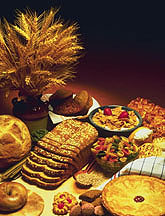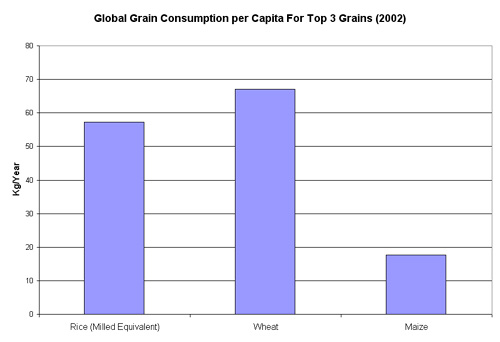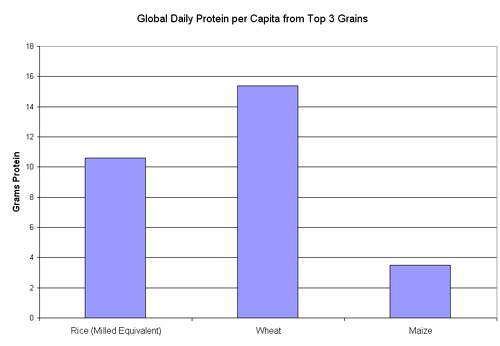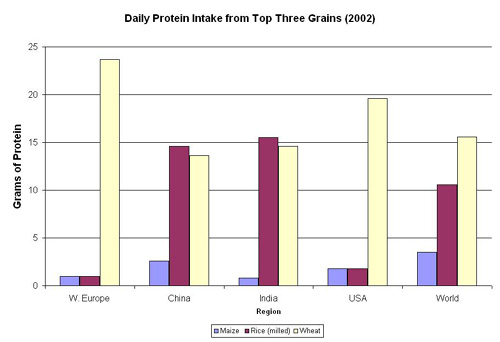![]() Species |
Rice |
Maize |
Wheat |
Barley |
Oats |
Foxtail Millet |
Pearl Millet |
Rye |
Sorghum |
Wild Rice |
Brachypodium |
Oryza Species |
Grape |
Arabidopsis
Species |
Rice |
Maize |
Wheat |
Barley |
Oats |
Foxtail Millet |
Pearl Millet |
Rye |
Sorghum |
Wild Rice |
Brachypodium |
Oryza Species |
Grape |
Arabidopsis
 Breakfast, lunch, dinner, and snacks almost always include foods made from hearty wheat. Photo by Keith Weller. Courtesy ARS. |
Cereal grains, such as wheat, rice, corn, sorghum, barley, millet, and oats, account for most of the food consumed by humans (14), but wheat stands out from the others. Globally, wheat nourishes more people than any other grain (6, 14), and is a major part of the diet for one third of all people (7). Whole wheat is highly nutritious and serves as a source of protein, B vitamins, iron, magnesium, and manganese (6). Although no grain can offer complete nutrition, wheat provides more protein than any other grain, and maize is the only grain that can offer more energy (9). The majority of wheat is milled into flour(6). In addition to being the only grain with enough gluten to make a raised or leavened loaf of bread, it is the basis of more foods than any other grain. Therefore, some form of wheat can be found at almost every meal (7, 11). Wheat, rice and corn (maize) are often considered to be the most important cereal crops for agriculture (see cereal production graphs). Globally, on average individuals eat more wheat and gain more protein from wheat than from either rice or corn (see Figures 1 & 2) (16). See World Wheat production and Consumption tables from CIMMYT for more information on these statistics. |
 |  |
However, the cereal providing an individual's main nutrition varies with region, depending upon the importance of a grain to the development of that culture. Rice was more important to the development of Eastern cultures, and wheat was more significant to Western ones (8, 11, 12). Figure 3 and Figure 4 show that, worldwide, rice provides slightly more more calories per capita than wheat, but wheat provides almost 50% more protein per capita than rice.
 |
 |
Wheat is consumed in many forms other than flour, including bulgur, cracked wheat, farina, wheat berries, wheat sprouts, rolled wheat flakes, wheatena, wheat germ, and wheat bran. (6) For more information on these forms, visit WheatFoods.org, The Cook's Thesaurus, WholeHealthMD.com and Grain Basics. For more details on nutritional values see information at the following links: wheat, wheat flour, and grains and pulses (legumes).